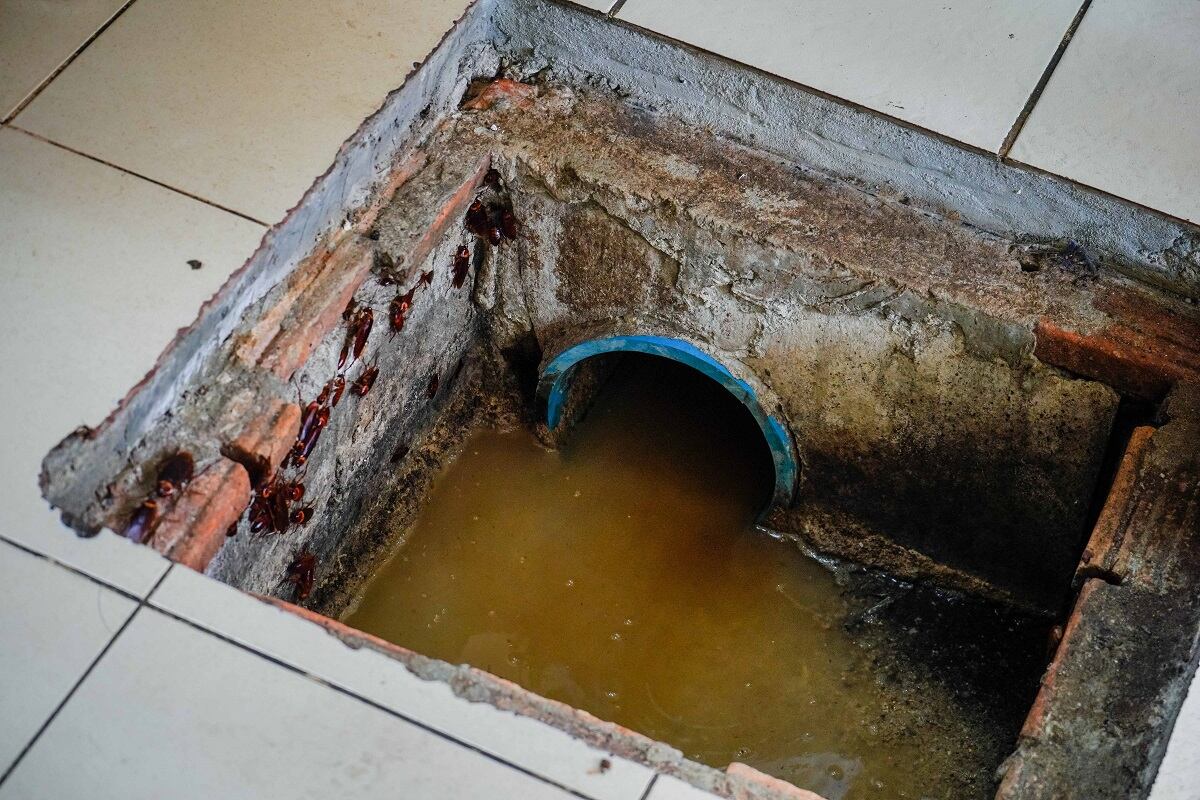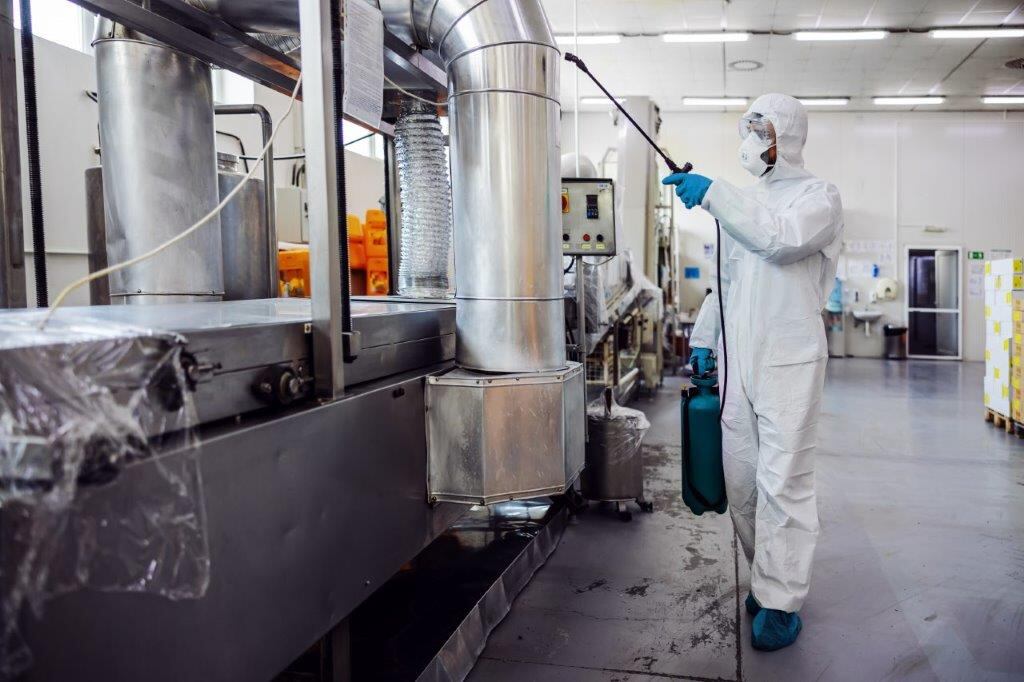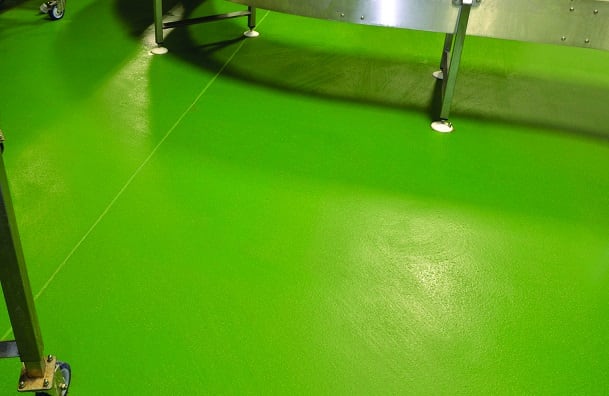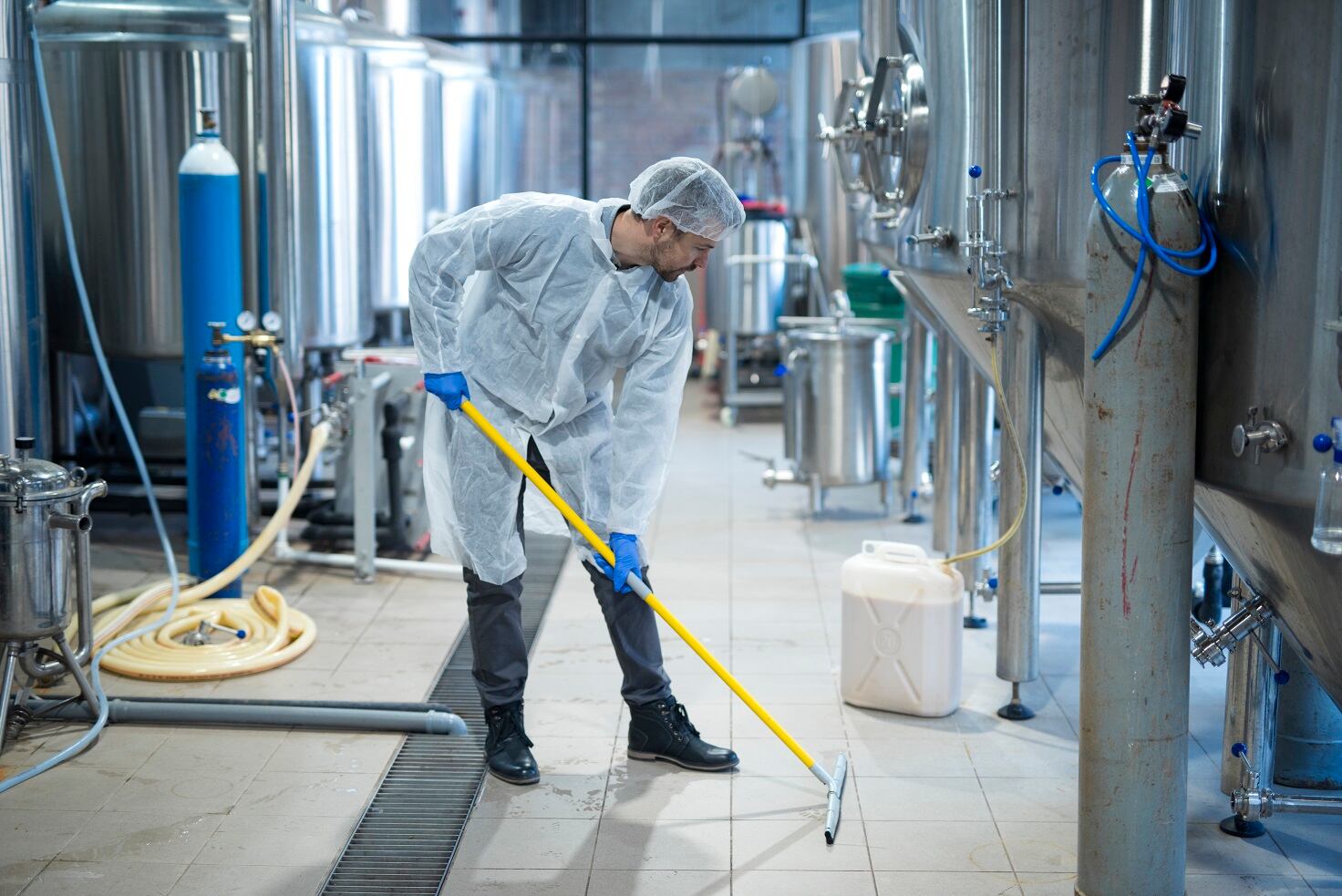On the one hand, the necessity to protect staff against COVID-19 infection has forced companies to introduce rigorous cleaning plans, with a positive knock-on effect on wider disinfection practices.
On the other, food processors that had to mothball facilities because of a downturn in demand have faced challenges as they opened back up.
Mariane Hodgkinson, hygiene specialist at cleaning tools specialist Hillbrush, says: “Those supplying retail markets for example have been extremely busy, while manufacturers supplying the foodservice sector have had a particularly tough time over the last 18 months.”
“Most businesses have carried out a review of practices around hygiene and implemented extra measures, especially around personnel hygiene and points of contact.
“These changes have proven to improve food safety as well as workplace wellbeing, and it is likely that this will remain as part of normal operations.”
Many food business operators (FBOs) have grappled with a shortage of internal specialist personnel, possibly pivoting at short notice to supplying consumers directly or furloughing staff. That has put pressure on all areas of operation.

Peter Littleton, technical director at Christeyns Food Hygiene says: “Staff are in short supply across the sector. Frankly, working a night shift in a cold, wet food factory is becoming increasingly unattractive if alternative employment is available. However, without that trained and diligent hygiene resource can a hygienic and safe food production facility be handed back in the morning?
Could automation offer a potential solution? US-based artificial intelligence firm Brain Corp seems to think so. Last month, it proudly announced that it had amassed the largest global fleet of automated cleaning robots deployed in public spaces, covering 100bn square feet.
Unfortunately, the UK is not there yet, Littleton says. “Automation of cleaning is still at the conceptual stage, with robotics being considered to fill the employee gap. However, the technology has a long way to go in a short space of time and needs to be hygienic itself.
“Some robotic production equipment has been implemented. However, EHDG [European Hygienic Engineering & Design Group] guidelines may not be precisely followed here leading to potential food safety risks, such as allergen cross-transfer particularly where vacuum pick and place equipment is in place.”
Just as food business operators have had to grapple with staff shortages, so too have local authorities. This has led to scaled back visits from environmental health practitioners (EHPs) and this has caused ‘significant decline in food hygiene standards’, according to the Chartered Institute of Environmental Health.
Carol Archibald, team leader for food, health and safety at Tendring Council in Essex says many foodservice operators have ‘slid quickly into poor routines’. That has resulted in an increase in food hygiene improvement notices being served, leading to lower Food Hygiene Rating Scheme (FHRS) ratings.
Food manufacturers are exempt from rating under the FHRS, but are still subject to inspections. It’s unclear at this stage how much they have been affected by the reduction in visits. They have had to contend with other pressures affecting cleaning tools and materials as well.
Costs are rising rapidly across every single raw material we buy
Littleton says: “Raw materials involved in making detergents and disinfectants are in increasingly short supply with costs rising rapidly across every single raw material we buy. In addition to the huge rises in caustic soda both nitric and phosphoric acid have risen sharply.
“At the moment, it’s more about ensuring continuity of supply to enable hygiene operations to continue to run. This has been exacerbated by the driver shortage as many class 1 drivers have been tempted away for bigger pay packets – and chemical delivery drivers require additional training and qualifications to safely truck tonnes of highly dangerous chemicals along the UK’s highways.
Post-Brexit legislation restricting UK firms to use of biocides registered with the Health & Safety Executive under the GB Biocidal Products Regulation is further reducing cleaning formulations available, Littleton says. The expense of registration is adding to the rising costs. Then there are environmental considerations.
“Some ingredients critical to detergent, and disinfectant, efficacy are undergoing review on their environmental profile and may become more challenging to use,” he says. “The alternatives, of which there are few, are a higher unit cost or need to be used at a higher concentration in the formulation to achieve the same effect.”
Hodgkinson says: “Hillbrush has always held a significant amount of stock, but we have had to work to increased lead times with supplier ordering and order much more in advance to ensure that we can fulfil our customer product requirements.
“We are investing in a new warehouse at our HQ in Wiltshire so that we can hold much more product in stock for quick despatch.”

In all the disruption, it seems fat, oil and grease (FOG) build-up is causing problems, potentially leading to pipe blockages and pollution as a result of ‘fatbergs’.
In October, Mar Batista, secretariat of the Grease Contractors Association (GCA) and head of programmes at administrator British Water said: “Amongst some food establishments, there appears to be confusion around legislation, standards and the range of appropriate solutions to use for grease management.
“We believe that consistent messaging and accessible information, combined with industry collaboration, education and innovation is key to the fight against fatbergs.”
In response, the GCA has launched new guidance on grease management for commercial kitchens.
Last month, Canada-based Bionetix International launched Eco-Trap, a range of three solutions to help tackle the issue.
Eco-Trap is a grease trap treatment containing additives that loosen and liquefy heavy grease deposits, speeding up their degradation. It contains biological nutrients and stimulants that boost the natural bacterial population to form a larger colony. The more beneficial bacteria are present, the more power is available to break down the fats, oils, and greases filling up the grease trap.
Eco-Trap L is a liquid version that can be added manually to the grease trap, but it is often injected automatically with the aid of a pump like those used for restaurant dishwashers. This cuts down on the manual labour of daily application.
If manual labour is not a concern, Eco-Trap P is a powder version packaged in water-soluble packets that can be added directly to the grease trap in just a few minutes at the end of the day.
Finally, Eco-Trap BLOC contains biological nutrients and stimulants in slow-release bloc form that can be added directly to a less turbulent (but not dead) area of the grease trap for extended treatment.
Bionetix reports that one fish canning factory operating 24/7 had a grease trap so overloaded that the water was completely obscured with a layer of fat. The severity of the problem may have been due to the use of seawater in factory processes slowing the digestion of fats due to high chloride content.
Two months after applying Eco-Trap in conjunction with BCP22 – a similar, extra strength treatment for FOG from Bionetix - the water surface had cleared up by 70%, leaving only 30% covered by fat.
Another stubborn and persistent challenge for food manufacturers is bacterial biofilm build up. The usual pathogen culprits, from listeria monocytogenes to salmonella enterica present difficulties at the best of times, but even more so now short staffing, increased cleaning costs and tight supply have piled on the pressure.

And it turns out many of the traditional methods for tackling biofilms may be less effective than previously thought, according to the findings of a three-year Campden BRI research project.
Rob Limburn, microbiology group manager at Campden BRI who led the project, says: “Biofilms can play havoc with food manufacturers’ operations. Not only are they resistant to usual decontamination methods making them hard to remove, but when they do detach, they can easily spread around a factory leading to post-process contamination and reduction of a product’s shelf-life.
“They also often go undetected as the usual means of monitoring microorganism levels commonly do not detect the biofilm-forming organisms that cause problems, which may be in a viable but not culturable state.
“Defining the resistance of key spoilage organisms in their biofilm state has allowed us to establish and optimise procedures for decontamination and removal of biofilms in several food industry settings.”
The main thrust of the project is that combining different solutions is the most effective way to address the problem, rather than relying on one method.
Zoe Lambert, microbiology research manager at Campden BRI who conducted the research, states: “We found some of the common methods to decontaminate a surface with a biofilm weren’t as effective as the industry believes. In fact, we learnt that combinations of chemical, enzymatic and/or physical approaches were sometimes needed to ensure biofilm removal.”
The project’s results will be made available to members of Campden BRI in the coming months.
2021 papers in the journal Food Control have investigated the use of cold plasma, which unfortunately can degrade food quality, potentially in combination with ozone, saturated steam and even Korean kimchi-derived lactic acid bacteria.
Some advocate the use of antimicrobial ultraviolet light to sterilise surfaces. Others, such as US-based Vyv, distributed in the UK solely by Save Money Cut Carbon instead harnesses the antimicrobial power within the visible light spectrum.
A useful general summary – Microbial biofilms in the food industry – a comprehensive review - Published online on 19 February 2021 (doi: 10.3390/ijerph18042014) in The International Journal of Environmental Research & Public Health – suggests: “Nowadays, disinfectants are the best ally to eliminate biofilms.
“However, other research fields, such as the composition of surfaces for materials to prevent bacterial adhesion and developing phages to combat biofilm-forming bacteria, have obtained favourable results.”
Hygienic design of surfaces and equipment, making them easier to clean and more resistant to biofilm adherence certainly helps.

For example, Kemtile installed a hygienic flooring system at UK tofu producer Tofu King’s new production and warehouse facility in Aston, Birmingham.
Kemtile incorporated 1,380m2 of co-polymer screed to the desired drainage ‘falls’. This was then overlaid with Stonclad UF - a trowel applied, high-performance polyurethane floor screed.
The company claims Stonclad UF is hard-wearing and slip-resistant, its dense, impervious surface makes it hygienic and easy to clean and it can be installed in one application, making it ideal for quick completion and minimal downtime.
Undoubtedly, the challenges to maintaining clean food and drink processing facilities are real, but if manufacturers are willing to ride the wave of sweeping changes and embrace the latest solutions, they can overcome them.

